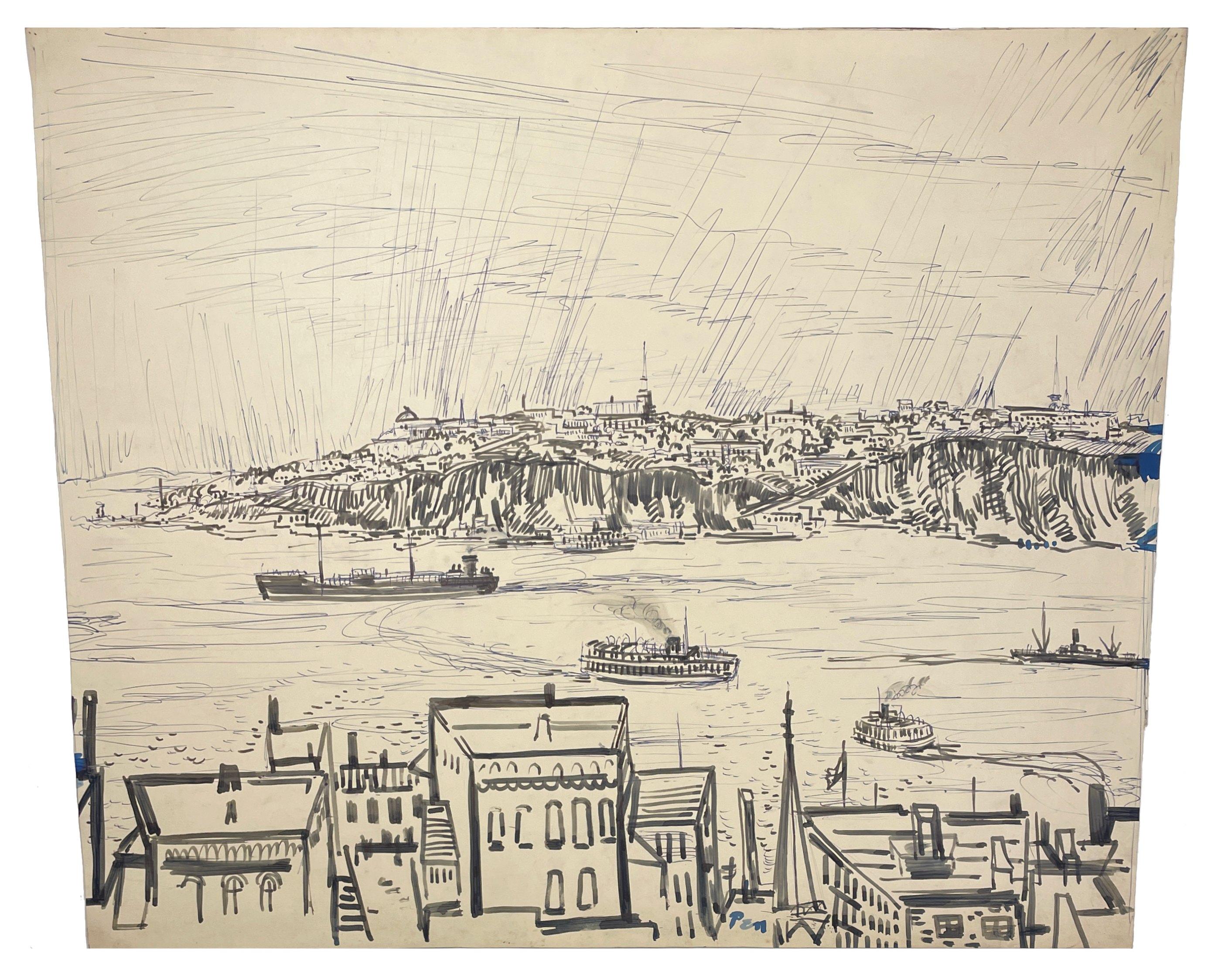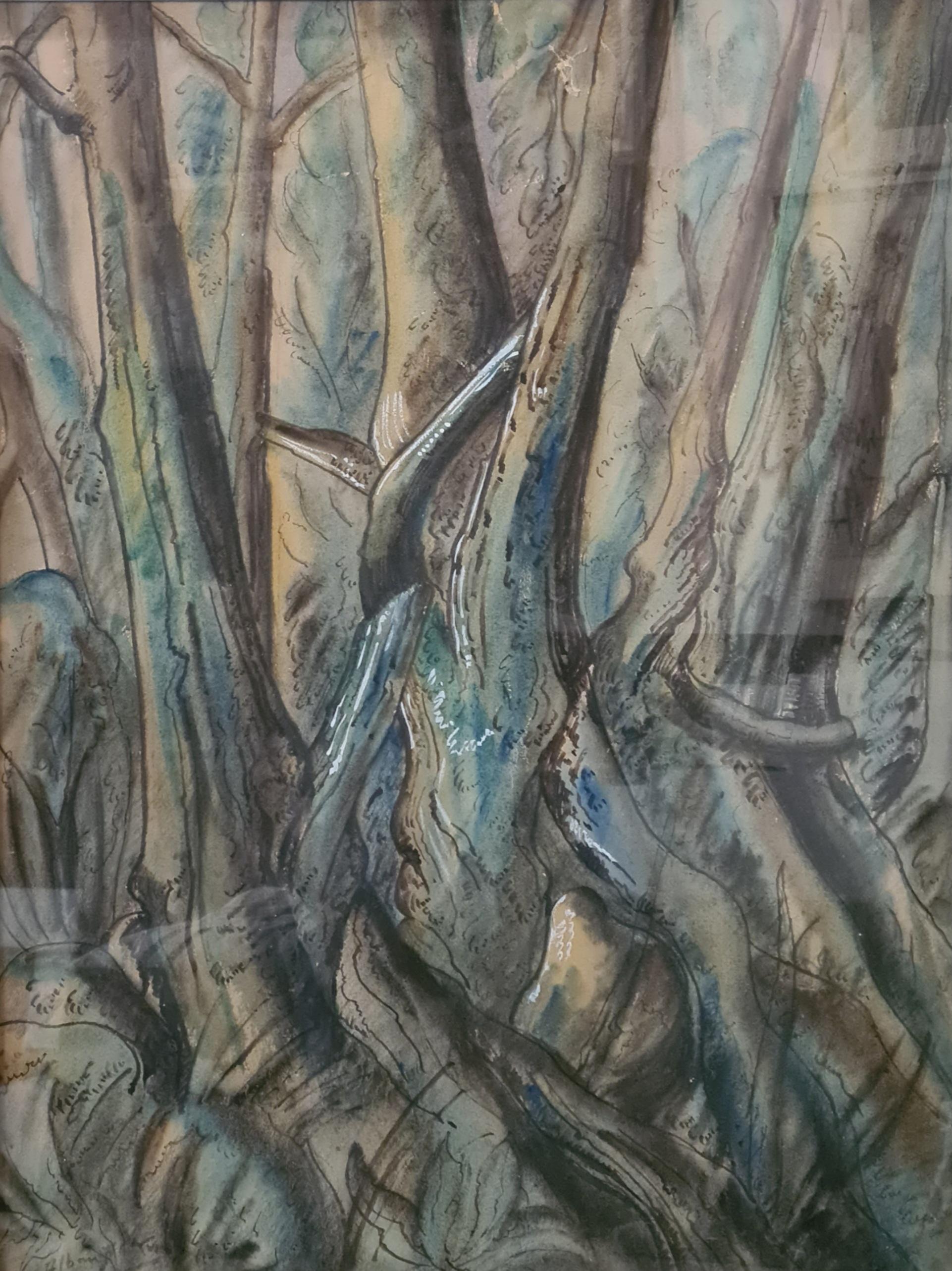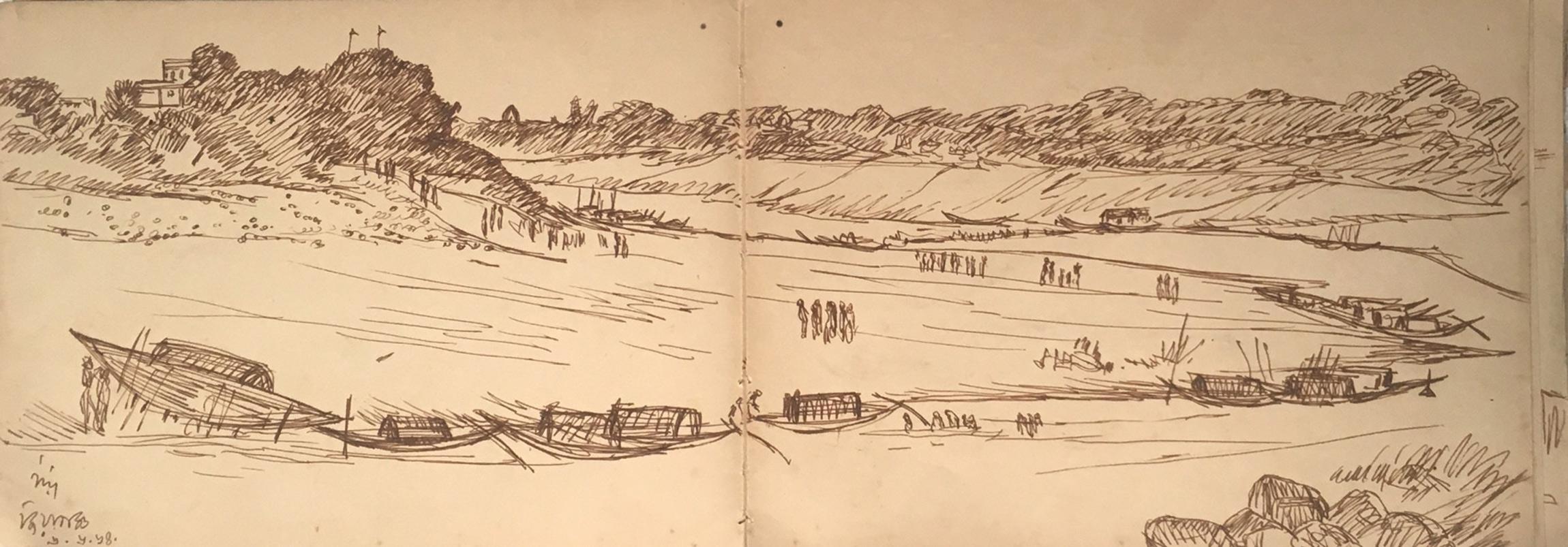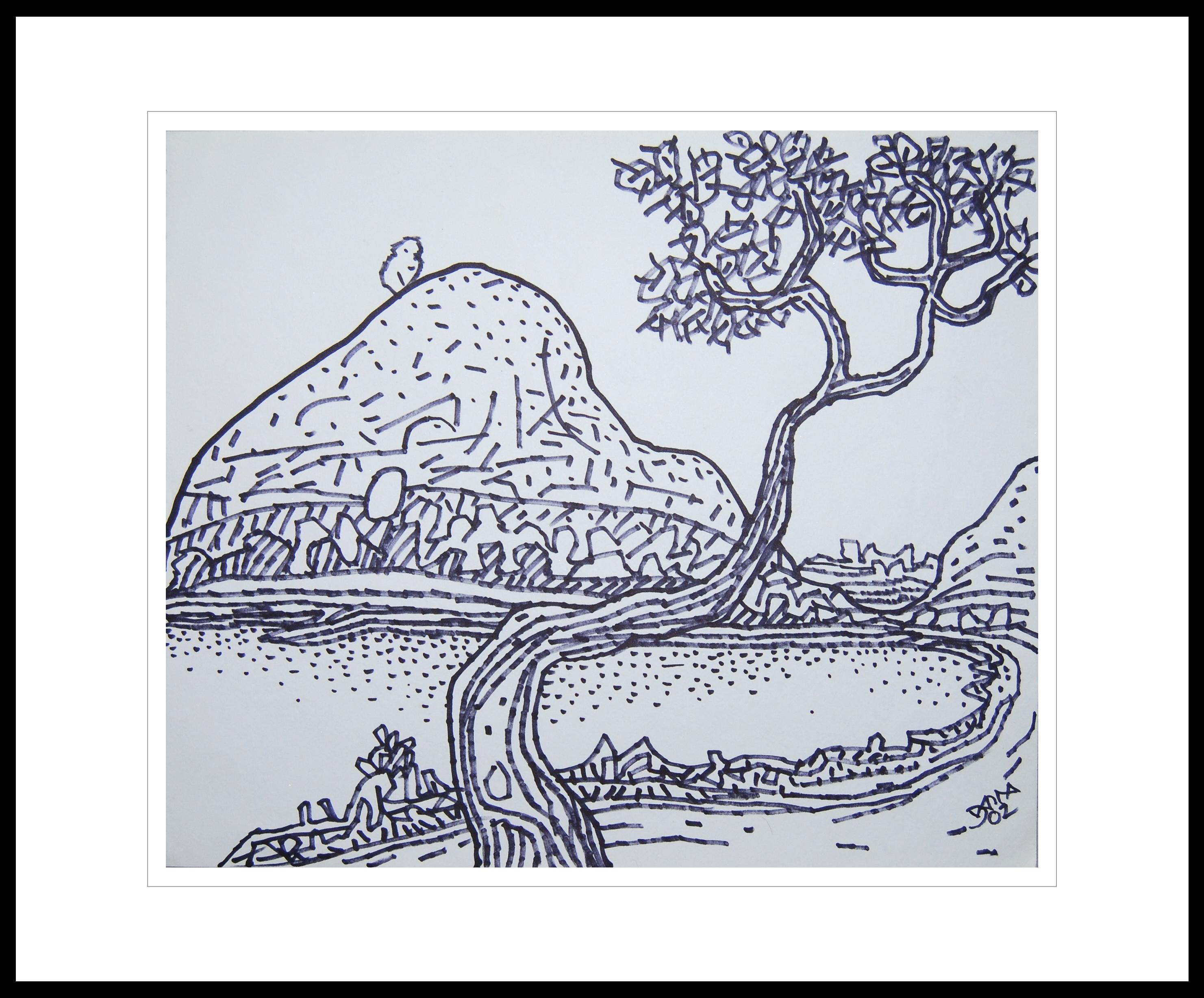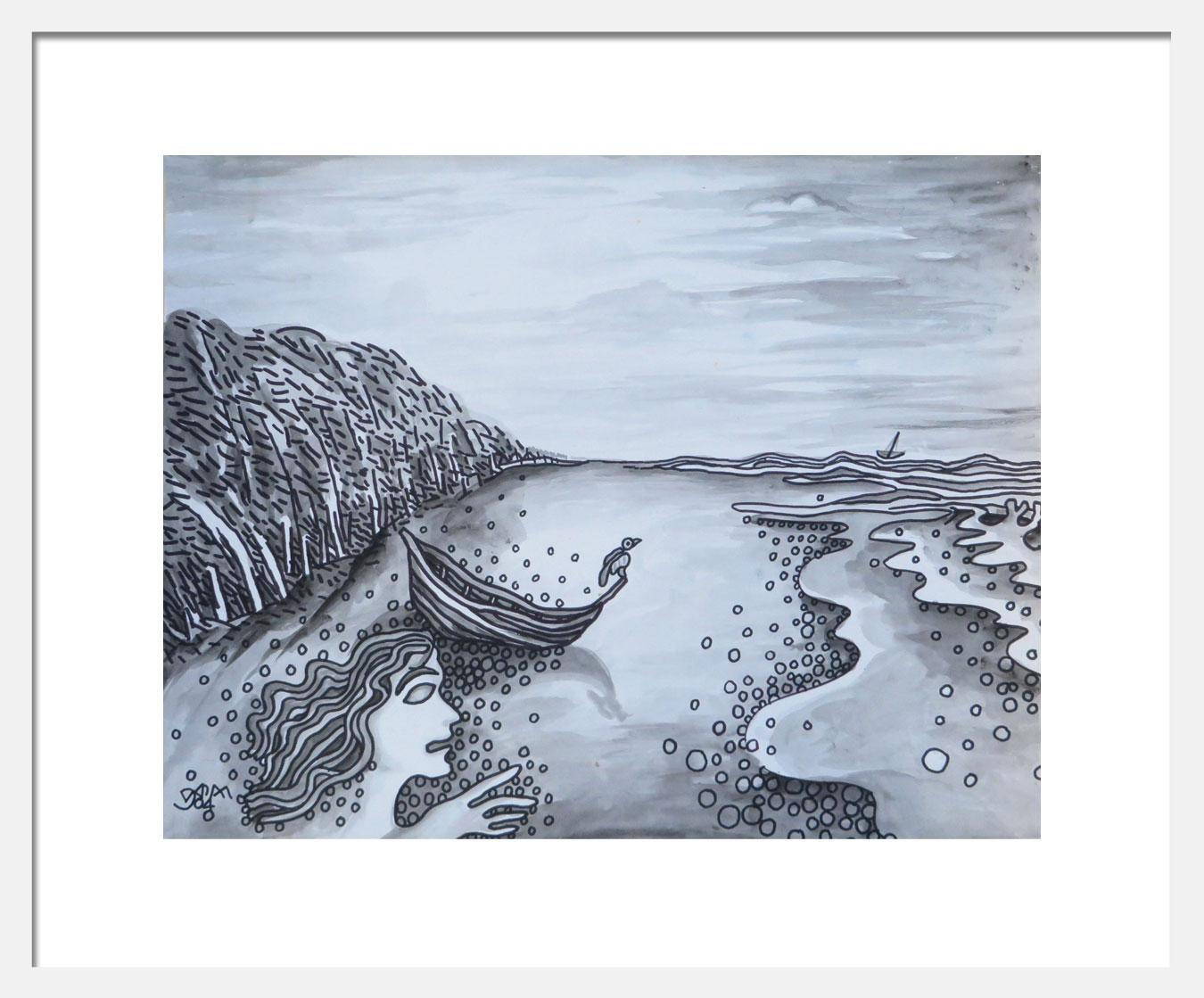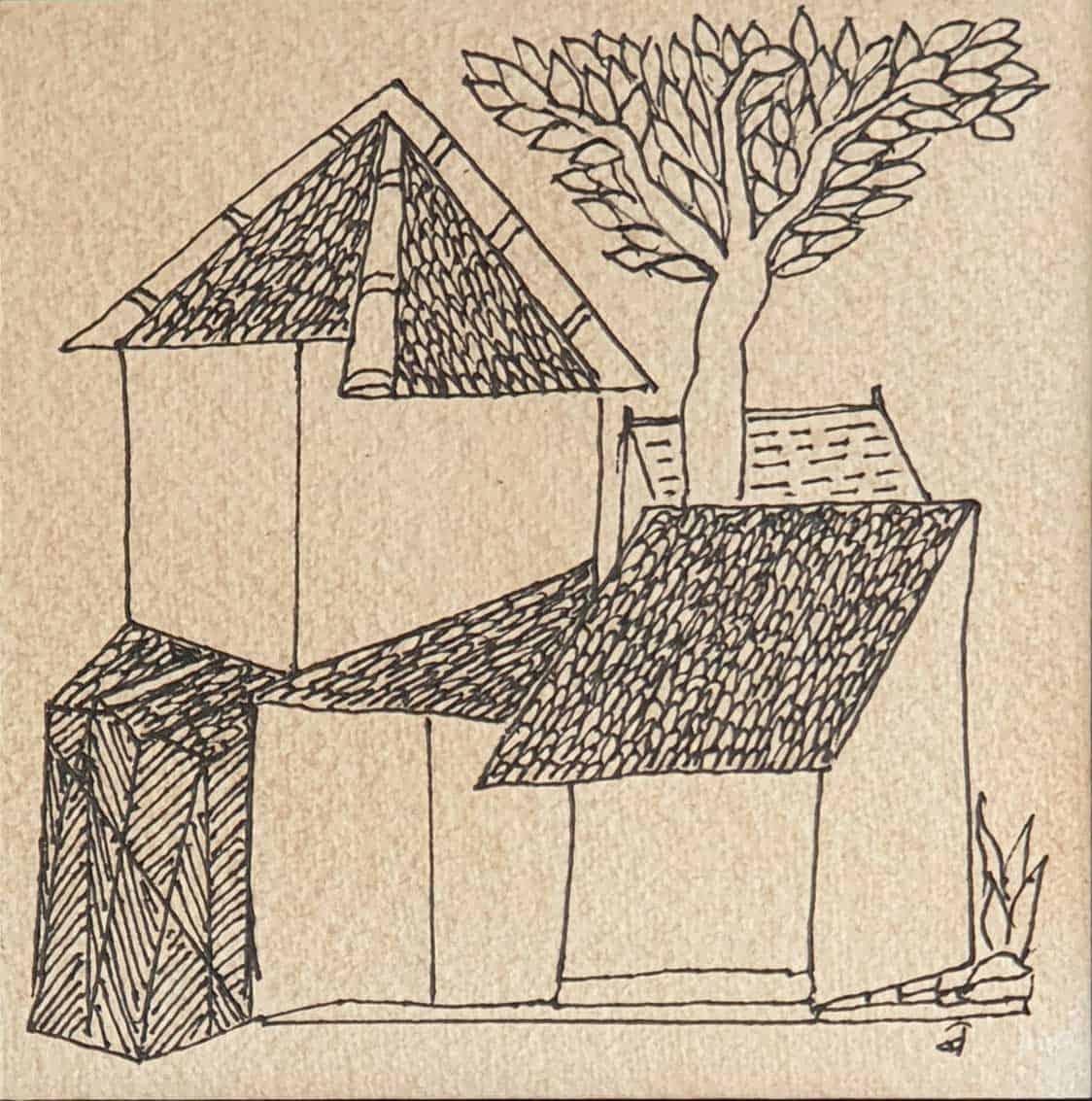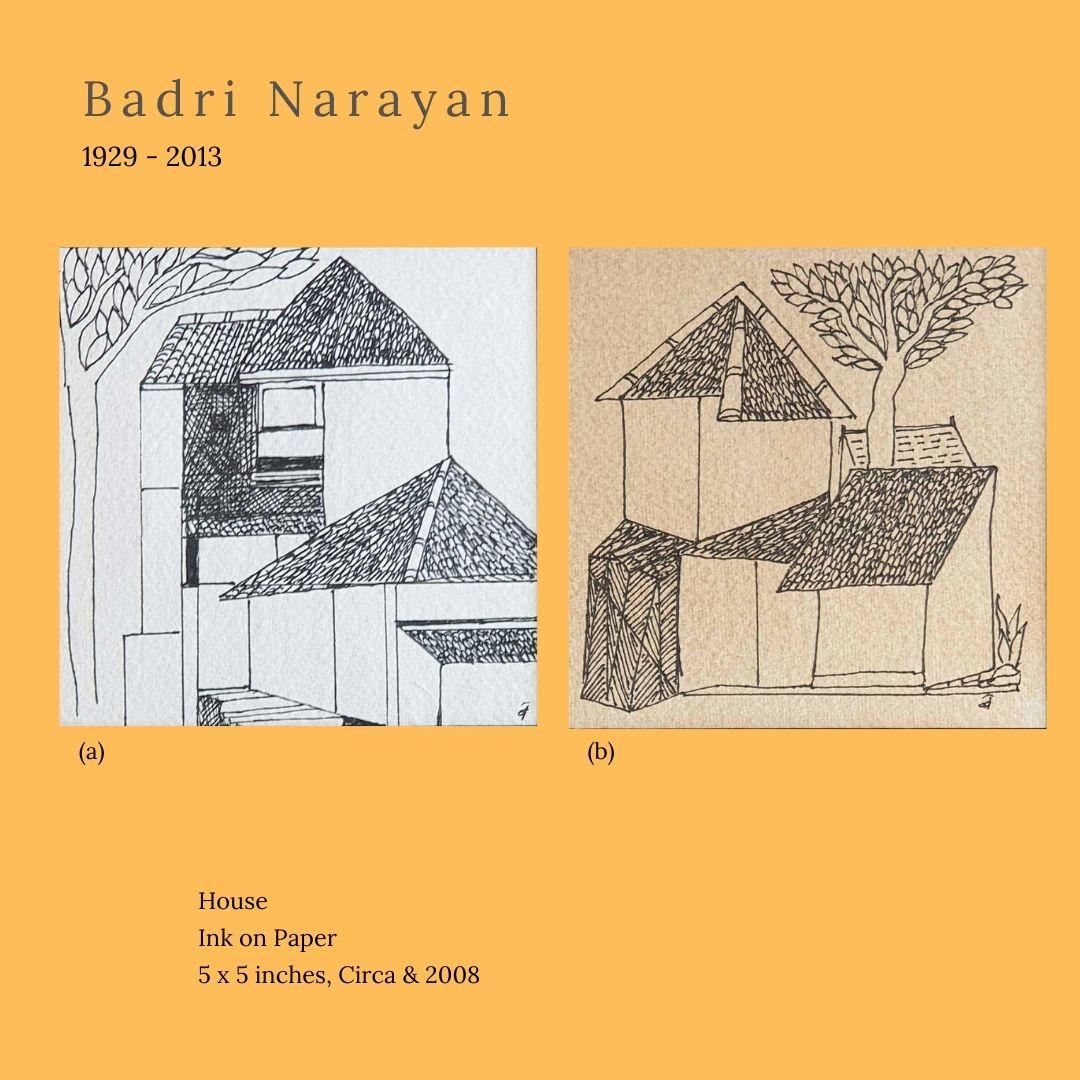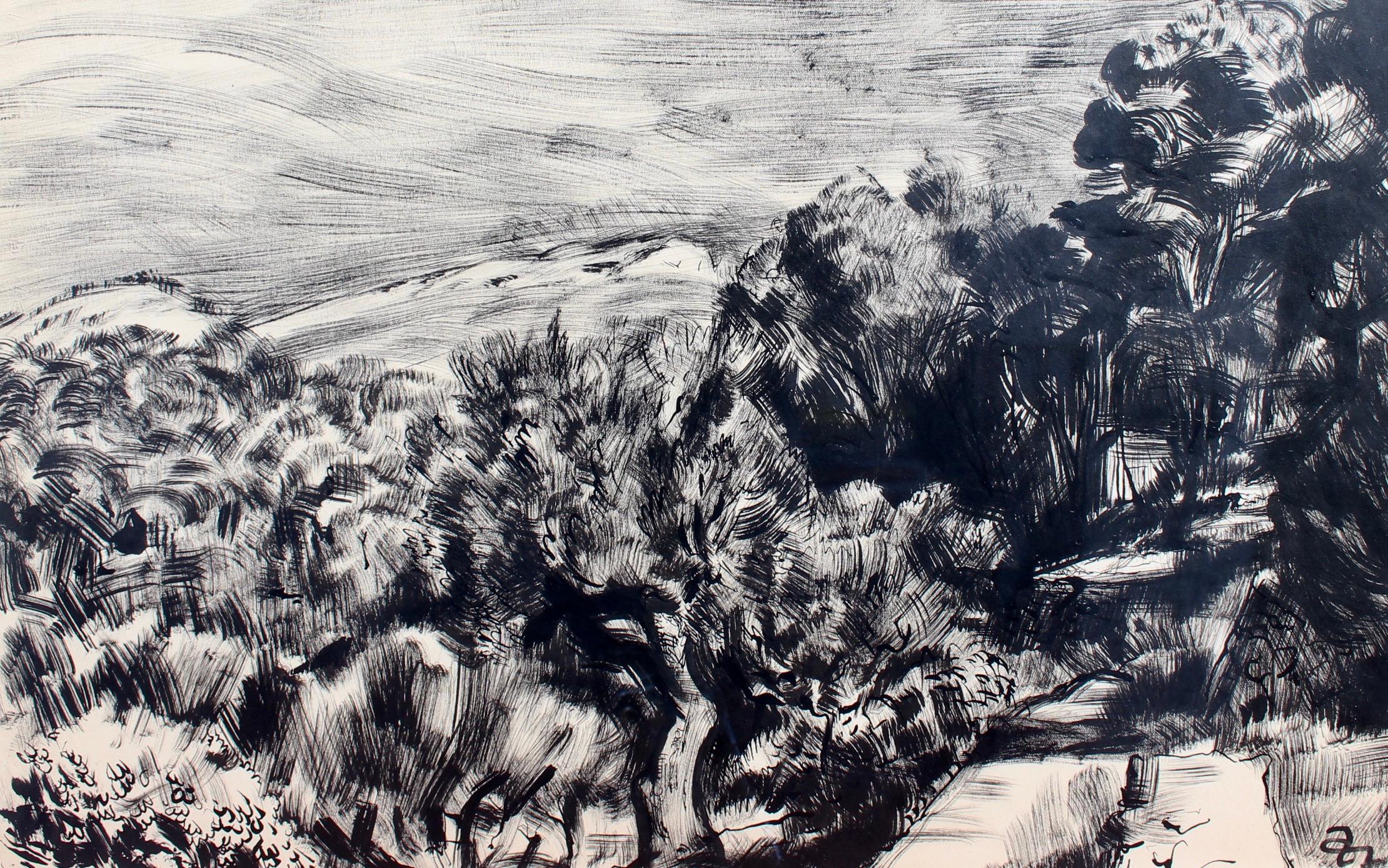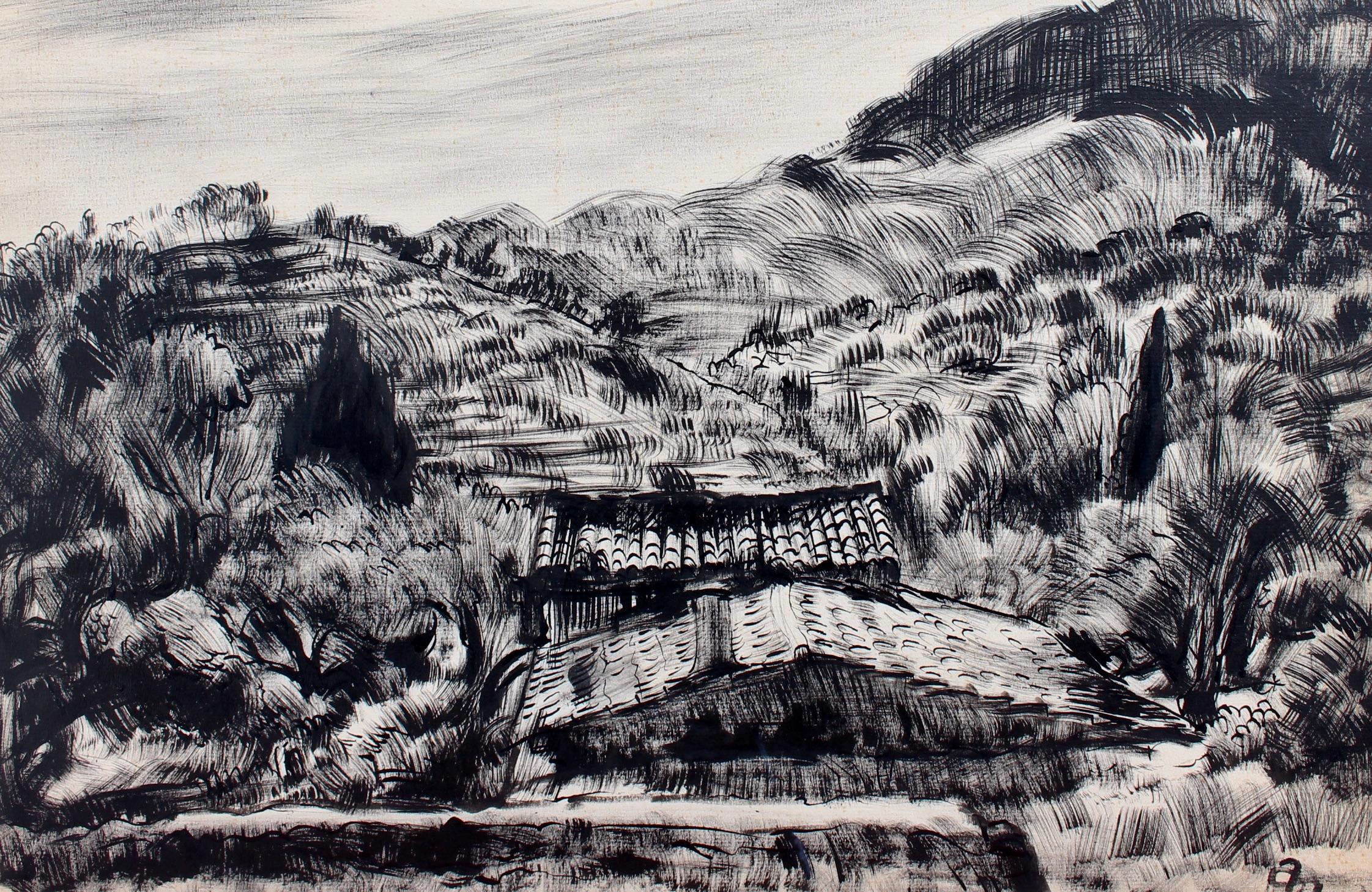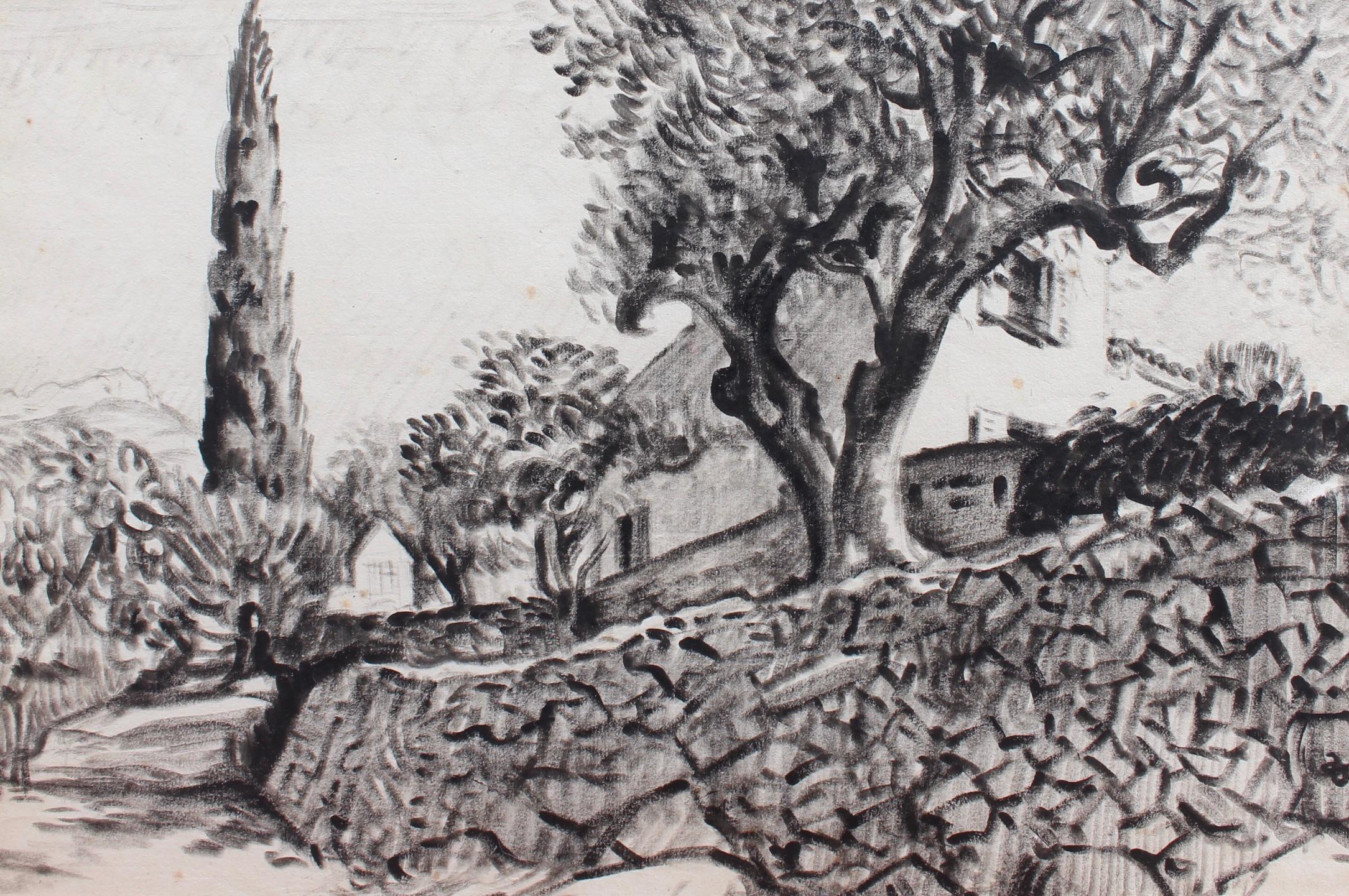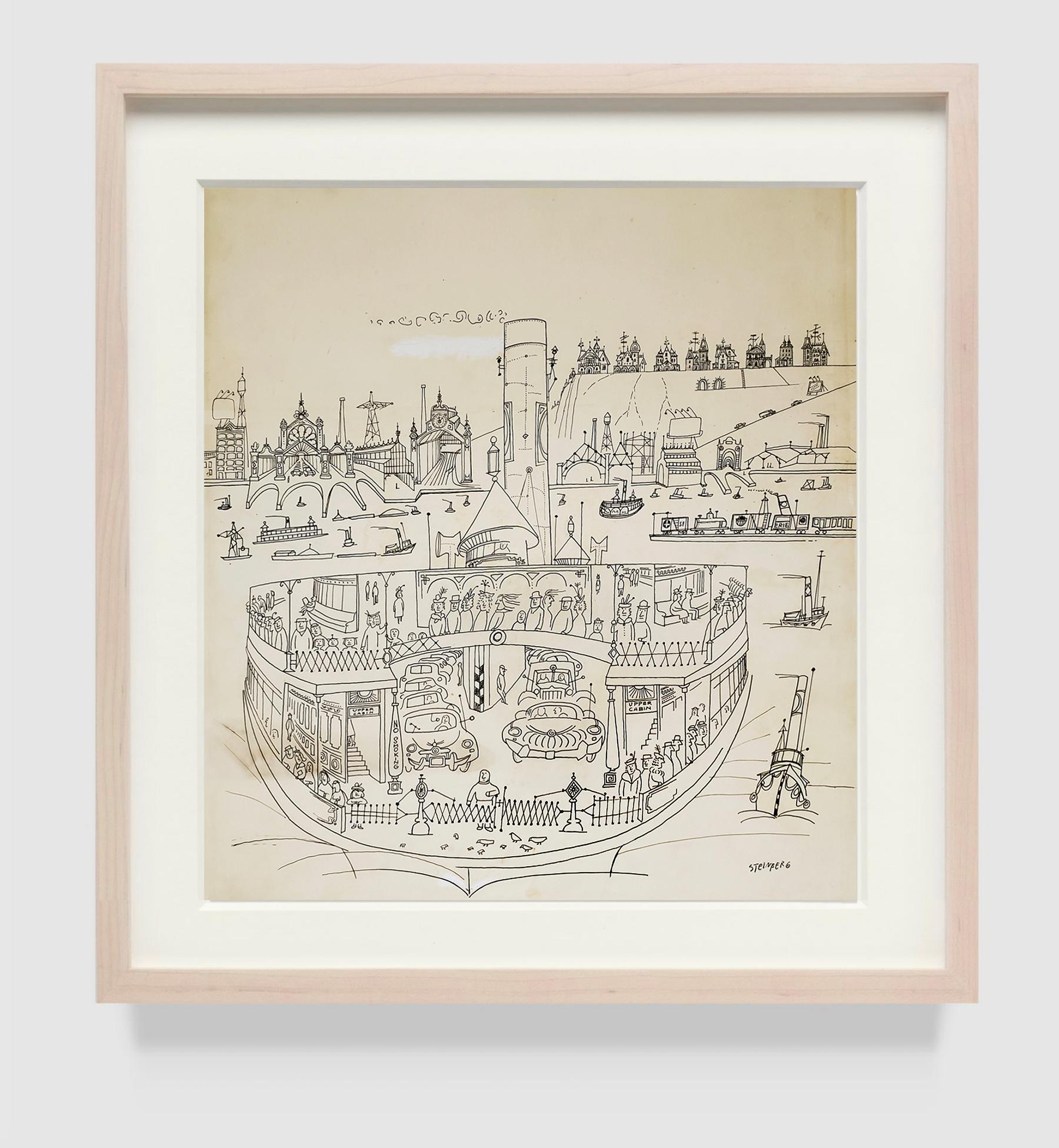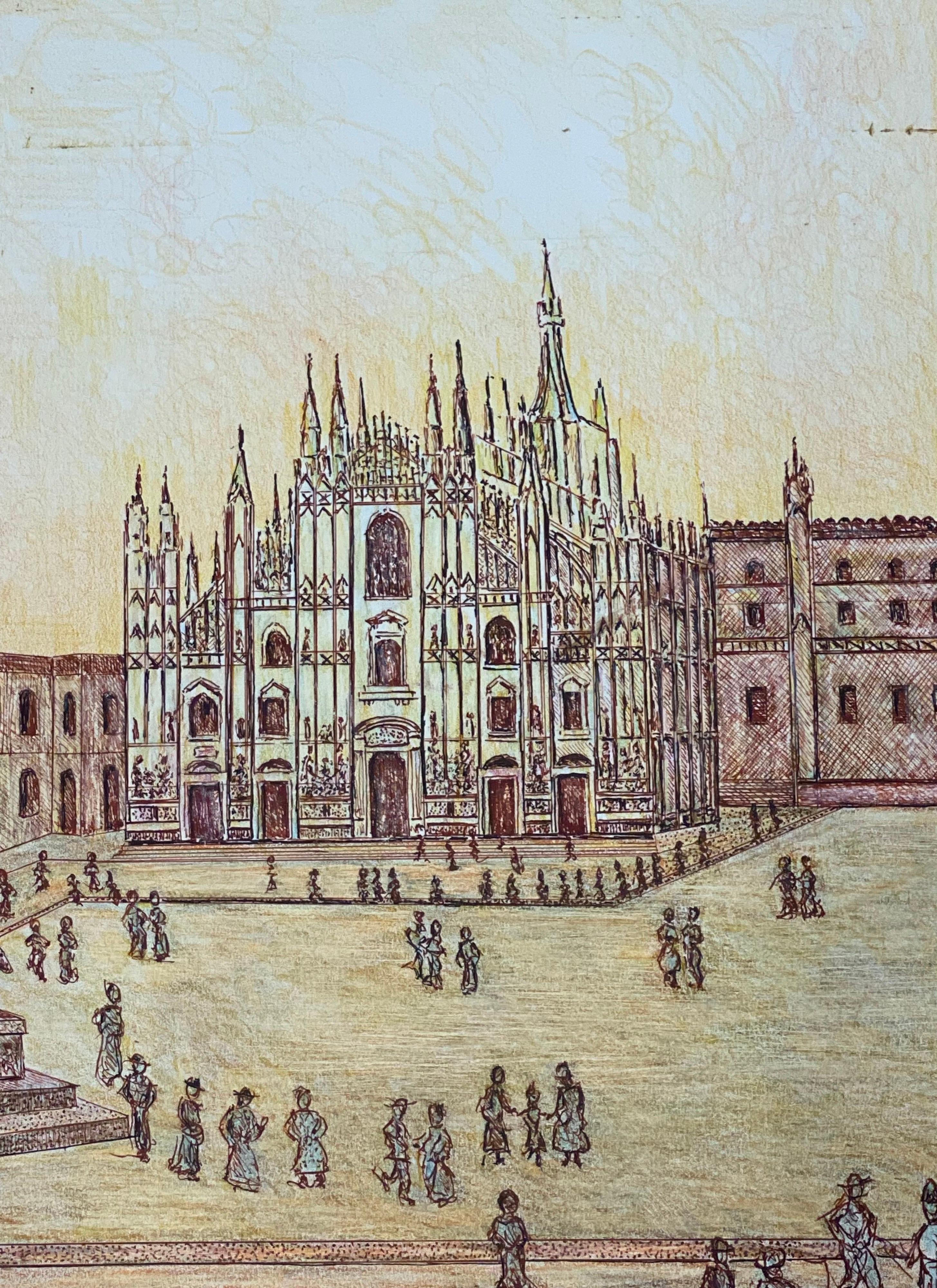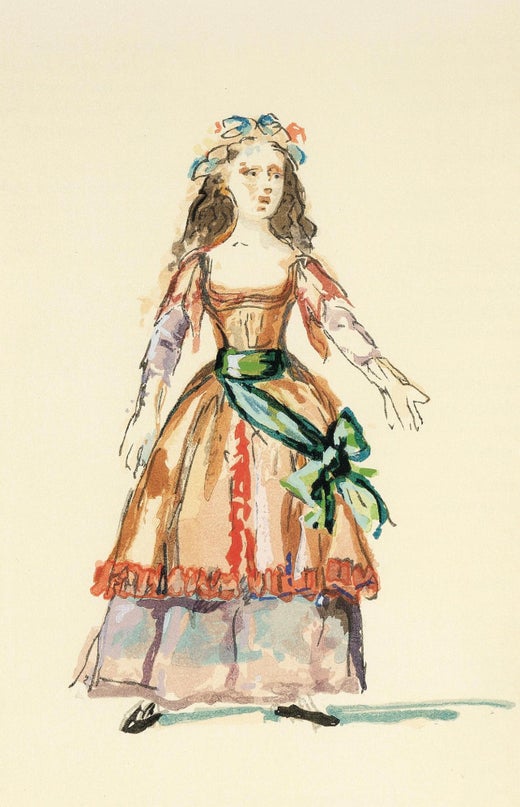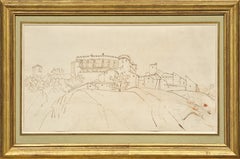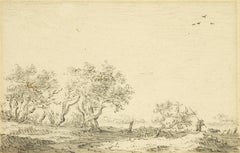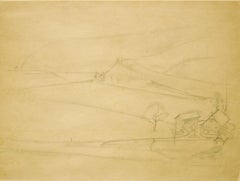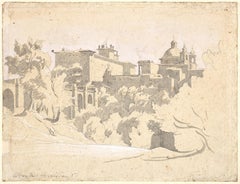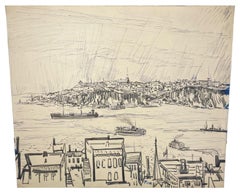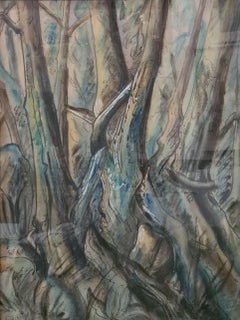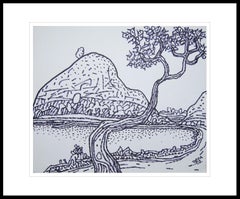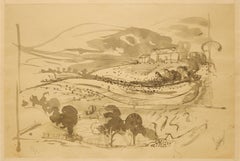
Study for "La Bergerie" - 1957-1960 - a double-sided ink wash signed by Balthus
View Similar Items
Want more images or videos?
Request additional images or videos from the seller
1 of 9
Balthus (Balthasar Klossowski de Rola) Study for "La Bergerie" - 1957-1960 - a double-sided ink wash signed by Balthus1957-1960
1957-1960
$21,000List Price
About the Item
- Creator:Balthus (Balthasar Klossowski de Rola) (1908 - 2001, French)
- Creation Year:1957-1960
- Dimensions:Height: 11.82 in (30.03 cm)Width: 17.82 in (45.27 cm)
- Medium:
- Movement & Style:
- Period:
- Condition:Recto Signed with monogram lower left “Bs.” Size : 11 13/16" x 17 13/16" (30 x 45.3 cm) Framed : 21 1/2 “ x 27 3/16” (54.8 x 69 cm).
- Gallery Location:PARIS, FR
- Reference Number:1stDibs: LU156829447592
Balthus (Balthasar Klossowski de Rola)
Balthus was born on 29 February 1908 into a cosmopolitan family; his father was of Prussian and Polish origin and his mother, Elsa Dorothea Spiro, nicknamed Baladine, was of Ashkenazi and Russian descent. At the beginning of the war, his family took refuge in Switzerland, where he stayed with his mother while his parents separated. In 1919, his mother met the poet Rainer Maria Rilke (1875 - 1926) who became her lover; Balthus (the nickname of the painter from which he chose his artist's name) was brought up in the artistic milieu of his mother's friends. Balthus moved to Paris with his mother in 1924. He enrolled at the Grande Chaumière academy and frequented Pierre Bonnard's studio. In 1926, he travelled to Italy where he discovered the frescoes of Piero della Francesca and Masaccio, which had a lasting influence on his art. Influenced by the surrealists, he held his first solo exhibition in 1934. Alongside his paintings, which were increasingly successful, he created several theatre, ballet and opera sets, an activity he continued after the war. In 1938, he held his first exhibition in New York.
He married Antoinette de Watteville (1912-1997) in 1937 and the couple settled during the war first in Champrovent in Savoie, then in Fribourg in Switzerland where two of their sons were born and finally in Cologny near Geneva from 1942 onwards. In 1945 the couple separated and Balthus returned to Paris. In 1953, Balthus, then aged 45, decided to move to the Château de Chassy in the Morvan region. He was soon joined there by his niece by marriage (the daughter of his brother Pierre Klossowski's wife from her first marriage), Frédérique Tison, who became his muse and mistress. At Chassy, facing the landscapes of the Morvan, in the immense space of the house, Balthus worked and created a huge number of works. His painting evolved to become closer to the fresco, in the manner of the Italian Renaissance masters. Frédérique Tison accompanied Balthus to Rome when he was appointed Director of the Villa Medici by André Malraux in 1961. When they finally broke up in 1966, Balthus gave her Chassy where she settled. In 1962, during a trip to Japan, Balthus met Setsuko Ideta. She became his wife in 1967. In 1977, at the end of their time in Rome, they settled in a large chalet in Rossinière (Switzerland) where the painter lived until his death on 18 February 2001.
About the Seller
5.0
Vetted Professional Seller
Every seller passes strict standards for authenticity and reliability
Established in 2020
1stDibs seller since 2021
10 sales on 1stDibs
Typical response time: 3 hours
Authenticity Guarantee
In the unlikely event there’s an issue with an item’s authenticity, contact us within 1 year for a full refund. DetailsMoney-Back Guarantee
If your item is not as described, is damaged in transit, or does not arrive, contact us within 7 days for a full refund. Details24-Hour Cancellation
You have a 24-hour grace period in which to reconsider your purchase, with no questions asked.Vetted Professional Sellers
Our world-class sellers must adhere to strict standards for service and quality, maintaining the integrity of our listings.Price-Match Guarantee
If you find that a seller listed the same item for a lower price elsewhere, we’ll match it.Trusted Global Delivery
Our best-in-class carrier network provides specialized shipping options worldwide, including custom delivery.More From This Seller
View AllView of a Mansion in the South of France, a drawing by Claude-Joseph Vernet
By Claude-Joseph Vernet
Located in PARIS, FR
We would like to thank Madame Beck-Saiello for confirming the autograph nature of this drawing after an in-person examination.
It was probably during an excursion in the countryside near Avignon that Claude-Joseph Vernet executed this drawing, enhanced with pen and brown ink, depicting a mansion on a hilltop overlooking a small village with geometric shapes.
1. Joseph Vernet, a painter influenced by Italy
Claude-Joseph Vernet was born in Avignon in 1714, the son of Antoine Vernet (1689-1753), an artisan painter of architectural decorations, coach panels, and the like. He moved to the studio of Philippe Sauvan (1697-1792), a leading history painter in Avignon, and then worked with Jacques Viali (active 1681-1745), a decorative, landscape, and marine painter in Aix-en-Provence. Vernet's first recorded paintings were decorative overdoors executed in 1731 in the Aix townhouse of the marquise de Simiane. In 1734, Joseph de Seytres, marquis de Caumont, a leading amateur in Avignon, sponsored Vernet to make a study trip to Italy to complete his artistic education and to draw antiquities for his patron.
As Avignon was a papal territory in Vernet's day, he also had a number of useful introductions among influential churchmen when he arrived in Rome. Vernet was soon at home in the French community there, and he was encouraged by Nicolas Vleughels (1668-1737), director of the Académie de France in Rome, even though the young painter had no official affiliation with the royal institution. He likely entered the studio of the French marine painter Adrien Manglard...
Category
1730s Old Masters Landscape Drawings and Watercolors
Materials
Ink, Laid Paper, Pen, Carbon Pencil
Landscape with Trees and a Fisherman walking, a drawing by Jan Van Goyen
By Jan Josefsz Van Goyen
Located in PARIS, FR
No Dutch draughtsman ever captured the atmosphere of the rural countryside of Holland with the same atmospheric and engaging simplicity that Van Goyen achieved in drawings such as this. Indeed, his landscapes were seminal in the development of the genre. The present sketch conveys a striking sense of movement within the natural landscape, conveyed by the deftly applied strokes of chalk, from which the artist’s hand can be sensed. The composition is characteristic of his work, with the low horizon affording significance to the broad sky and the soaring birds within. This feeling of windswept motion powerfully evokes the expansive Dutch farmland with which he was evidently preoccupied.
1. Jan van Goyen...
Category
1650s Old Masters Landscape Drawings and Watercolors
Materials
Chalk, Ink, Laid Paper
Study for « Paysage de Fribourg » - 1943 a drawing by Balthus (1908 - 2001)
By Balthus (Balthasar Klossowski de Rola)
Located in PARIS, FR
Provenance: Frédérique Tison, Château de Chassy (Burgundy-Franche Comté - France)
Bibliography: J. Clair, V. Monnier Balthus, catalogue raisonné of the complete works, Gallimard, Pa...
Category
1940s Modern Landscape Drawings and Watercolors
Materials
Paper, Pencil
View of Ariccia, a preparatory drawing by Achille Bénouville (1815 - 1891)
Located in PARIS, FR
This very modern drawing presents a view of Ariccia, a small town 25 kilometres south-east of Rome. The Palazzo Chigi (in which the film-maker Luchino Visconti would film a large part of The Leopard a century later) and the adjoining church are seen from the bottom of the ravine that surrounds the town. This drawing is a moving testimony to the attraction of the city for artists of the Romantic period, who established in Ariccia a vivid artists' colony.
1. Achille Bénouville...
Category
1850s Romantic Landscape Drawings and Watercolors
Materials
Ink, Gouache, Pencil
View of an Antique City, a wash landscape by Jan de Bisschop (1628 - 1671)
Located in PARIS, FR
The attribution to Jan de Bisschop has been confirmed by the RKD with the following comment: "We base this attribution on the dark washes, the subject represented and the monogram".
...
Category
17th Century Old Masters Landscape Drawings and Watercolors
Materials
Ink, Pen
View of the Ovo Castle in the Moonlight, a 19th century Neapolitan gouache
Located in PARIS, FR
Neapolitan gouaches appeared in the eighteenth century when tourism in the Naples area was developing: the discoveries of Herculaneum and Pompeii made this city a mandatory stop on the Grand Tour, the journey made by wealthy Europeans to complete their education.
Generally small in size for ease of transport and affordable in price, these gouaches were the ideal travel souvenir that these tourists of the early days were bringing back to capture the idyllic landscapes they had discovered during their journey and to share them with family and friends upon their return at home.
The Bay of Naples and the eruptions of Vesuvius are the favourite themes of these views. Here we have a view of the Ovo Castle, which was rebuilt on the island of Partenope, in the middle of the Bay of Naples and about a hundred metres from the shore by the Normans in the 12th century on antique ruins...
Category
Early 19th Century Romantic Landscape Drawings and Watercolors
Materials
Gouache, Paper
You May Also Like
A Large, 1950s Mid-Century Modern Ink Drawing of Quebec City by Rudolph Pen
Located in Chicago, IL
A Large, 1950s Mid-Century Modern Ink Drawing of Quebec City by Rudolph Pen. Artwork is formatted in a trapezoid shape, an innovative composition device for which the artist's work ...
Category
Mid-20th Century American Modern Landscape Drawings and Watercolors
Materials
Paper, Ink
Mid-Century Modernist Watercolour On Paper, Trees At Buckfast Abbey
Located in Cotignac, FR
Early 1960s work on paper of a group of trees at Buckfast Abbey in Devon, England, by Alban Atkins. Signed bottom left, titled and dated to the reverse. There is also a collection or accession number to the backboard.
Atkins has captured the sculptural nature of the tree trunks as they have grown in the landscape giving the work a feeling of living, writhing things as well as an abstract feel in the composition.
Atkins was one of the group of important artists chosen and commissioned by Sir Kenneth Clark...
Category
1960s Modern Landscape Paintings
Materials
Paper, Pastel, Ink, Watercolor
Jiyagunj : Boat, Rare Drawings, Ink on Paper by Indian Master Artist Indra Dugar
By Indra Dugar
Located in Kolkata, West Bengal
Indra Dugar - Jiyagunj - 5.5 x 16 inches (unframed size)
Ink on paper
Inclusive of shipment in roll form.
Jiyagunj, Exemplary rare drawings, Ink on paper by Shri Indra Dugar from the Note Book of Bengal’s much lauded Master Artist , inspired by Master Artist Shri Nandalal Bose...
Category
1960s Modern Landscape Drawings and Watercolors
Materials
Paper, Ink
Landscape Drawing, Village Scenery, Ink on paper, Bengal Master Artist"In Stock"
By Prokash Karmakar
Located in Kolkata, West Bengal
Prakash Karmakar – Landscape – 11.5 x 10.5 inches (unframed size)
Ink on paper
Signed lower right in Bengali
Inclusive of shipment in roll form.
Karmakar is best known...
Category
Early 2000s Modern Landscape Drawings and Watercolors
Materials
Paper, Ink
Landscape, Watercolour, Ink on Paper by Modern Indian Artist "In Stock"
By Prakash Karmarkar
Located in Kolkata, West Bengal
Prakash Karmakar - Landscape - 20 X 30 inches (unframed size)
Watercolour, Ink on Paper
Delivery of shipment in ready to hang condition.
Style : Legendary master artist Lt. Prokash ...
Category
Early 2000s Modern Landscape Drawings and Watercolors
Materials
Paper, Ink, Watercolor
$1,200 Sale Price
40% Off
House, Tree, Drawing, Ink on Paper, Black & White by Badri Narayan "In Stock"
By Badri Narayan
Located in Kolkata, West Bengal
Badri Narayan - House - 5 x 5 inches ( unframed size)
Ink on paper
Inclusive of shipment in ready to hang form.
Style : The artist’s paintings are narrative, and titles like ‘Queen ...
Category
Early 2000s Modern Landscape Paintings
Materials
Paper, Ink
